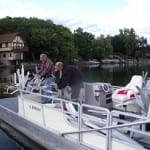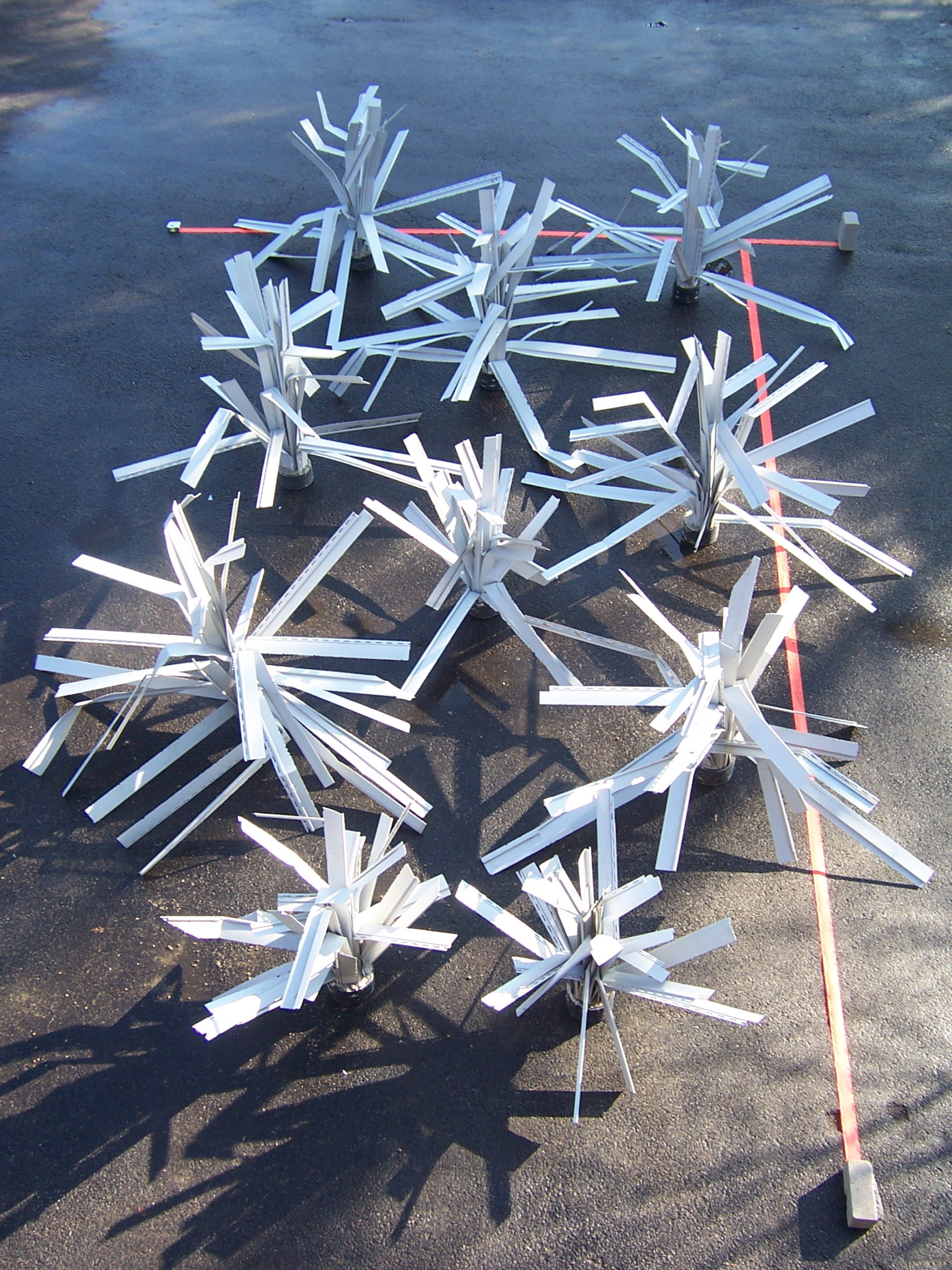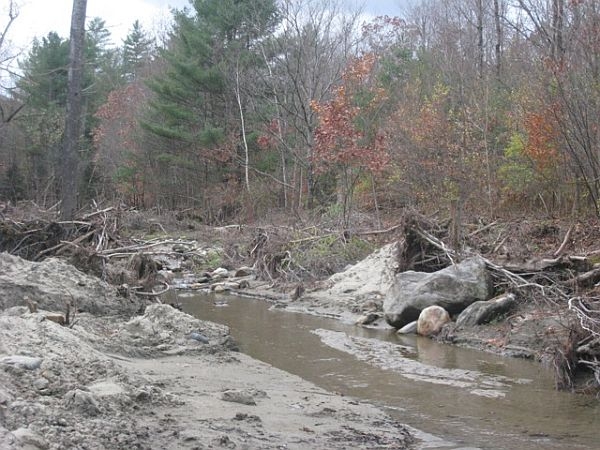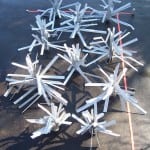Montana is among the states receiving funding for improving fish habitat. The U.S. Fish and Wildlife Service will provide more than $3.3 million to support 68 fish habitat projects in 36 states. An additional $9.9 million in partner contributions will go toward restoring and enhancing stream, lake and coastal habitat, as well as to improving recreational fishing and helping endangered species. The funding is provided by 15 Fish Habitat Partnerships. In Montana under the Western Native Trout Initiative, the state will receive $61,000 in Service funds and $70,000 in partner funds to restore 9 in stream miles in Four Mile Creek to benefit Yellowstone cutthroat trout. See the dozens of unique artificial fish habitat models, fish attractors and fish cover used at fishiding.com, the leader in science based, proven, fish protection.
Tag: endangered species
Fish passage boasts jobs, increases fish habitat
Nearly 60 miles up the North Umpqua River from Roseburg, a huge effort is under way to increase and improve the habitat for the steelhead, spring chinook, coho salmon and Pacific lamprey that make their way up the Wild and Scenic River to spawn.
A fish ladder is being built at Soda Springs Dam so the fish will be able to swim beyond the dam for the first time in more than 50 years, exploring another four miles of the North Umpqua River and returning to the spawning beds of their ancestors in three miles of Fish Creek.
See the dozens of unique artificial fish habitat models, fish attractors and fish cover used at fishiding.com, the leader in science based, proven, fish protection.
Every aspect of the project takes the fish into account, whether it’s sealing the concrete or rounding out the inside corners of the fish ladder to ensure a safe and appealing passage past the 77-foot-high dam.
Of course, if the dam weren’t there, the native fish already would be swimming unimpeded through the narrow canyon of the North Umpqua. But since the North Umpqua Hydroelectric Project, which includes eight dams, has been in place since the 1950s and provides a substantial amount of electricity, the fish ladder is a compromise.
PacifiCorp expects to spend about $60 million on the fish passage at Soda Springs before it’s completed at the end of 2012. The fish passage is uniquely engineered for the geological features of the river canyon. The company estimated the cost of removing the dam, a solution sought by conservation groups, would have been about the same, but electricity rates would have increased because of the lost hydropower.
Soda Springs generates enough electricity each year to power about 40,000 homes — that’s just short of the number of households in Douglas County. More importantly, company officials say it’s a regeneration dam that produces electricity that can be stored and used during peak demand times.
Despite its steep price tag, the fish passage is small compared to the many massive projects PacifiCorp is involved in throughout the Northwest. Rates are expected to creep by less than 1 percent to pay for the construction project.
That makes it like a stimulus strategy that came along at the right time. While the construction business has been slow elsewhere, the tiny village of Toketee has been bustling with heavy equipment, trucks and workers since the project began in 2010. General contractor is Todd Construction of Tualatin, which was previously located in Roseburg.
The largest subcontractor, Weekly Bros. Inc. of Idleyld Park, hired extra employees to work on the fish ladder. As many as 80 people were on the job this past summer for the company.
Even with winter setting in, anywhere from 50 to 100 people are working on the project daily, making the site appear as if it’s crawling with workers in reflective vests and hard hats.
Between the additional jobs, the promise of clean hydropower well into the future and the re-opening of historic fish habitat, this is a project that’s worth the effort and expense.
Partnership Preserves Livelihoods and Fish Stocks
HALF MOON BAY, Calif. — Stevie Fitz, a commercial fisherman, was pulling up his catch in one of his favorite spots off of Point Reyes in June when he saw something terrifying — in his nets were nearly 300 bocaccio, a dwindling species of rockfish protected by the government. Continue reading “Partnership Preserves Livelihoods and Fish Stocks”
Savannah’s Thurmond Lake accepts Christmas trees for recycling
 Photo by Tracy Robillard
Photo by Tracy Robillard
Park Ranger David Quebedeaux places used Christmas trees in Thurmond Lake to enhance fish habitat.
SAVANNAH, Ga. – The U.S. Army Corps of Engineers Thurmond Project Office will accept natural Christmas trees (no artificial trees) for recycling Dec. 16 through Jan. 6.
See the dozens of unique artificial fish habitat models, fish attractors and fish cover used at fishiding.com, the industry leader in science based, man made and artificial fish habitat, proven to provide all fish with cover they prefer to prosper.
The recycled trees will be used as fish attractors in Thurmond Lake. Corps rangers and volunteers will submerge trees around fishing piers to improve fishing habitat. Additional trees will be staged at select ramps around the lake to be used by the public. Anyone wishing to obtain a list of locations where the trees will be available should contact the Corps’ Thurmond Lake Office after Jan. 10.
The Christmas trees can be dropped off at Riverside Middle School, located in Evans, Ga. All decorations, such as tinsel, lights and garland must be removed from the trees before dropping them off. Dumping of household trash at the site is strictly prohibited.
“Small trees and brush provide cover for fish, particularly as nursery areas for juvenile fish,” said Kenneth Boyd, Thurmond Lake conservation biologist. “In addition, they provide habitat for aquatic insects – essential food during the early stages of most fish species.”
For more information or to volunteer, contact the Thurmond Lake Project Office toll free 1-800-533-3478, or visit
http://www.sas.usace.army.mil/lakes/thurmond/index.html.
Log Jams Left Behind By Irene for fish habitat?
(Host) Tropical Storm Irene washed trees and other debris into rivers and streams.
With winter coming on and the spring floods that follow, the state has launched an initiative to assess the location of debris that could dam up water flow.
But as VPR’s Nancy Cohen, reports there’s no state money to remove the logjams.
(Cohen) The Agency of Natural Resources is asking regional planning commissions to work with towns to identify what clean up work on which rivers and streams should be a priority. Natural Resources Secretary Deb Markowitz says there’s a concern about log jams
(Markowitz) “The trees around streams and brooks were lifted out of the grounds and now are in the rivers and streams. The towns are concerned that if they don’t act, it’s going to cause problems during the seasonal flood in the spring.”
(Cohen) The six regional planning commissions in the areas most affected by Irene are surveying towns, including the Windham County commission.
Chris Campany, its executive director, is in South Newfane, where the Rock River jumped across Dover Road during the flood.
He says the survey is trying to pinpoint where there are areas that are still vulnerable to flooding during winter thaws or spring flooding. Campany says the survey asks about debris jams in streams that may act like a dam during a thaw.
(Campany) “As ice breaks up or as water flows you basically wind up with a lake forming up behind that debris jam. And then it either finds its own course or it breaks through and suddenly you have that surge of water.”
(Cohen) Campany says big pieces of debris could cause big problems
(Campany ) “Some of the logs are going to be the battering rams that you have during the next flood event.”
(Cohen) The Agency of Natural Resources will send engineers and hydrologists to assess the debris jams that pose the highest risks. The agency can help decide how much debris should be left in a stream to protect fish habitat and how much should be removed.
But Justin Johnson, the deputy commissioner of the Department of Environmental Conservation, says there’s no state money to help towns or private property owners remove the debris.
(Johnson) “If there’s a log jam or some kind of a debris jam that’s imminently threatening a public assets then we can usually get FEMA money to help remove that. But if it’s just something on private, sending water onto private land somewhere, it’s not going to affect a public asset we don’t have access to money to do anything with that .”
(Cohen) Private property owners might be able to get funding from the U.S. Department of Agriculture to remove debris that could cause a flood.
For VPR News I’m Nancy Cohen
(Host) Reporting about Vermont’s recovery from the floods of Tropical Storm Irene is supported by the VPR Journalism Fund.
See the dozens of unique artificial fish habitat models, fish attractors and fish cover used at fishiding.com, the industry leader and only science based, man made and artificial fish habitat, proven to provide all fish with cover they prefer to prosper.
- Disqus
- Like
- Dislike
- 1 p
Wonder Lake Sportsman’s Club adds over 50 more Fishiding artificial fish habitat
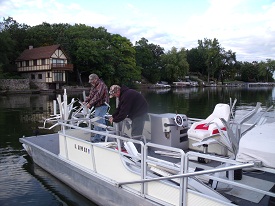 |
| Published 17th Nov 2011 |
| http://www.youtube.com/watch?v=a15veu8Onlg&feature=player_embedded Members of the Sportsman’s club are at it again, enhancing their lake with more long term habitat, teamed up with Fishiding, 56 units of all varieties were dropped in a key area adjacent to spawning grounds. About 10 shallow Cradle models were sunk in 3-5 feet of water, with a line of Safehouse structures leading out to deeper water. The Cradle model consists of hundreds of fine strands of reclaimed PVC designed to give fry and baitfish areas to grow and hide from predators. When the fry have adequate habitat, they are given time to grow to the preferred size of 4-6 inches before venturing out into deeper water to become forage for predators.See the dozens of unique artificial fish habitat models, fish attractors and fish cover used at fishiding.com, the industry leader and only science based, man made and artificial fish habitat, proven to provide all fish with cover they prefer to prosper. The key is to make sure there is a continuous line or “tree row” of habitat from shallow spawning grounds out to deep water. If the fish have to swim from shallow areas out to deeper cover without cover to hide in, they get eaten prematurely, or before growing large enough to best benefit the larger predators like bass, walleye, crappie and musky. The club members clipped structurespot markers to each unit as it was dropped, to see where each one lands to ensure the continuous coverage. When all units are installed, they took some pictures to refer to the shape and design they created. After the pics, they simply pull the clip free on the structurespot markers and wind them up to re-use. The Safehouse models were installed from about 5 feet deep out to 8 feet and deeper where a huge cluster of the largest Keeper models were dropped. Algae begins to grow immediately in this dark, fertile water and the club will be fishing over them this winter through the ice. To date, over 125 fishiding fish habitatunits have been installed, with more being put together by members, donated by fishiding. Wonder Lake, at 830 acres, is the largest private lake in Illinois and Wisconsin. Through many different fund raising events, the club stocks fish twice a year as well as building and installing over 100 Wood duck houses, maintaining them and even video recording the hatching of chicks too. Annual lake cleanups, fish shocking surveys, carp derbys and kids fishing events are just a few of the things the club does for the lake and the community. |
Move the creek to bring back fish?
 Rehabilitation of an area near Kama Point and Kama Bay (20 kilometres east of Nipigon) will reinstate Kama Creek and its floodplain to a condition resembling its original pre-1960s configuration. ((Lakehead University))
Rehabilitation of an area near Kama Point and Kama Bay (20 kilometres east of Nipigon) will reinstate Kama Creek and its floodplain to a condition resembling its original pre-1960s configuration. ((Lakehead University))
Decades ago, Kama Creek was realigned to protect a railway crossing from erosion. But the move destroyed brook trout spawning grounds and created a barrier to migration up the creek.
Now, the creek is being redirected to its original course.
“You could actually walk down the old channel if you sort of took your time and crawled through the bush a little bit,” said Robert Stewart, who teaches in the Lakehead University geography department.
Before the creek realignment, brook trout populations were estimated as above average for the North Shore of Lake Superior. But after the creek was moved, brook trout populations in Kama Creek and within Nipigon Bay dramatically declined.
 By redirecting Kama Creek to its original formation, it is hoped fish like Brook Trout will repopulate the area. (Lakehead University)After studying the area extensively, Stewart said researchers were confident the creek could be restored to a condition resembling its original pre-1960s configuration.
By redirecting Kama Creek to its original formation, it is hoped fish like Brook Trout will repopulate the area. (Lakehead University)After studying the area extensively, Stewart said researchers were confident the creek could be restored to a condition resembling its original pre-1960s configuration.
The restoration project will create four acres of fish habitat and two acres of wetland — and provide a wealth of experience for students.
“By co-ordinating this work through Lakehead University, we are able to provide hands-on, meaningful experiences for our graduate students,” Stewart said.
 Graduate students are expected to take part in the ongoing monitoring of Kama Creek. (Lakehead University)He said he expects that future graduate students will carry out post-monitoring for the Kama restoration.
Graduate students are expected to take part in the ongoing monitoring of Kama Creek. (Lakehead University)He said he expects that future graduate students will carry out post-monitoring for the Kama restoration.
Throughout the rest of November, R&M Construction will reposition the current delta and channel in Kama Creek. The project is expected to be completed by late fall.
See the dozens of unique artificial fish habitat models, fish attractors and fish cover used at fishiding.com, the industry leader and only science based, man made and artificial fish habitat, proven to provide all fish with cover they prefer to prosper.
Project to improve fish habitats begins in Missouri
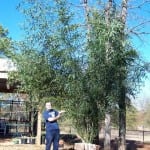
The Missouri Department of Conservation began a project last week to increase fishing opportunities on Lake Taneycomo.
On Friday, the department began placing fish habitats in the upper mile of the lake.
A press release said periods of heavy hydropower generation below the dam leaves “trout vulnerable to swift currents and (limits) fishing access for wade and bank fishermen.”
Newly installed structures in the lake will include boulder clusters, which should provide trout areas to rest and feed and provide anglers with more accessible fish habitats during periods of generation.
The project will be in conjuction with a drawdown of Lake Taneycomo requested by Empire District Electric Co., which will enable improvements to be constructed on Powersite Dam.
The department “plans to utilize this drawdown period to use large equipment near the lake to place the boulder clusters,” the release said.
Conservation officials will be at the project site to monitor the work and answer any questions from the public.
The department will use machinery to move the boulders into place, however, fishing will still be permitted in areas near where the work is being done.
The project is expected to conclude by the following Friday, Nov. 4.
The project is part of the Table Rock Lake National Fish Habitat Initiative, which is designed to maintain and improve fish habitats in Table Rock Lake and Lake Taneycomo.
This project is a joint effort of the Missouri Department of Conservation, the National Fish and Wildlife Foundation, Bass Pro Shops, the U.S. Army Corps of Engineers and other organizations.
It is designed to be a pilot project for a broader national program focused on habitat protection and restoration in reservoirs throughout the country.Tyler Francke
Visit mdc.mo.gov for more information on Missouri fishing.
See the dozens of unique artificial fish habitat models, fish attractors and fish cover used at fishiding.com, the industry leader and only science based, man made and artificial fish habitat, proven to provide all fish with cover they prefer to prosper.
New pier for Tahoe Beach Club development improves fish habitat
sets up plans

A new pier installation at Tahoe Beach Club www.beachclubtahoe.com will underscore the lakefront lifestyle at the first fully-owned residential lakefront development on Lake Tahoe in 25 years, and mark initial phase construction at the eagerly awaited project.
According to a news release, the new 159-foot pier will be just one of the few floating piers on Lake Tahoe. Constructed with recycled materials, a 90 foot section of the pier will raise and lower with lake level to allow for littoral drift features conducive to the lake’s sensitive fish habitat, water quality and natural environment. Completion is planned for summer 2012.
The pier has generated renewed enthusiasm and inquiries at the 20-acre site situated on prime beach front property at Stateline, Nevada. The location is the hub of recreation and nightlife activity in the heart of South Tahoe, between Edgewood Tahoe Golf Course, major casinos and Heavenly Mountain Resort. Ownership of the Tahoe Beach Club units is being offered through an exclusive priority reservation program, according to the release.
Tahoe Beach Club plans include 143 luxury villas and estate homes. The private Beach Club (the heart and soul of the development) will include amenities featuring an indoor/outdoor pool, boat-accessible beachfront restaurant, health club with work-out facilities, spa and locker rooms, concierge services, and a business center. In recent months, more than 150 potential buyers have stepped forward expressing interest in having ownership in this gated lakefront community, the release states.
The First Phase will include 39 luxury units (villas and estate homes), ranging in size from 1,250 square feet to 4,000 square-feet. Lake Tahoe’s feel and charm will be prevalent in the 14 separate buildings associated with the development, including a gatehouse and carriage house with the newest Green-Built Design architecture highlighting Tahoe’s best attributes.
A model for environmental design, the project was unanimously approved in 2008 by the Tahoe Regional Planning Agency. Complementing the aesthetics plans also include construction as a green building and design toward Leadership in Energy and Environmental Design (LEED), promoting energy conservation. The plan will also restore two acres of stream environment zone and enhance the natural eco-system of the Burke Creek-Rabe Meadow area, the release states.
For sales information visit the sales office at 170 Highway 50 next to Lakeside Inn & Casino, call 775-589-2643 or see us online at www.beachclubtahoe.com.
About South Shore Tahoe, LLC
South Shore Tahoe is a privately-held real estate development firm with offices in Stateline, Nevada. For more information on the Tahoe Beach Club, visit www.beachclubtahoe.com.
Related Stories
- Edgewood Tahoe Lodge plans unveiled (WITH SLIDESHOW)
- Lake Tahoe law firm sets bar for environmental cases
- Nominations are in for the 2011 Blue Ribbon Awards
- Open Letter: South Lake Tahoe City Manager offers explanation to proposed budget cuts
- More city services on the chopping block; budget meeting Thursday
- Annual Winter Swap at MontBleu to support Heavenly Ski and Snowboard Foundation
- Lakeview Commons Project Nears Completion
- Barton Auxiliary’s Famous Cheese Balls On the Way
Instream and adjacent habitat improvements will be completed for the Manistee River,Michigan
| 2011 10 “Waters to Watch” Project Updates |
| THURSDAY, 06 OCTOBER 2011 15:00 |
| Manistee River, MI (Great Lakes Basin FHP) Staudinger’s and Scoy Ponds, NY (Atlantic Coastal FHP) Llano River, TX (Southeast Aquatic Resources Partnership) Barataria Bay, LA (Southeast Aquatic Resources Partnership) Purpose of the project The stream will no longer be impounded, sand and sediment will be transported naturally, stream temperatures will recover, stream habitat will improve, and wild brook trout will be able to return to a reach that has been segmented by 12 dams and two dredged channels for approximately 40 years. This project will also improve the overall ecological health of the riparian corridor by improving uplands and wetlands adjacent to the instream restoration work. Project Timeline Partners Updates/Changes 1st. Quarter, 2011 2nd Quarter, 2011 See the dozens of unique artificial fish habitat models, fish attractors and fish cover used at fishiding.com, the industry leader and only science based, man made and artificial fish habitat, proven to provide all fish with cover they prefer to prosper. At the Mecum Road site the following has been completed. Media coverage updates http://www.michiganrivernews.com/2011/06/river-rehab-projects-put-michigan-in-national-spotlight/ |
